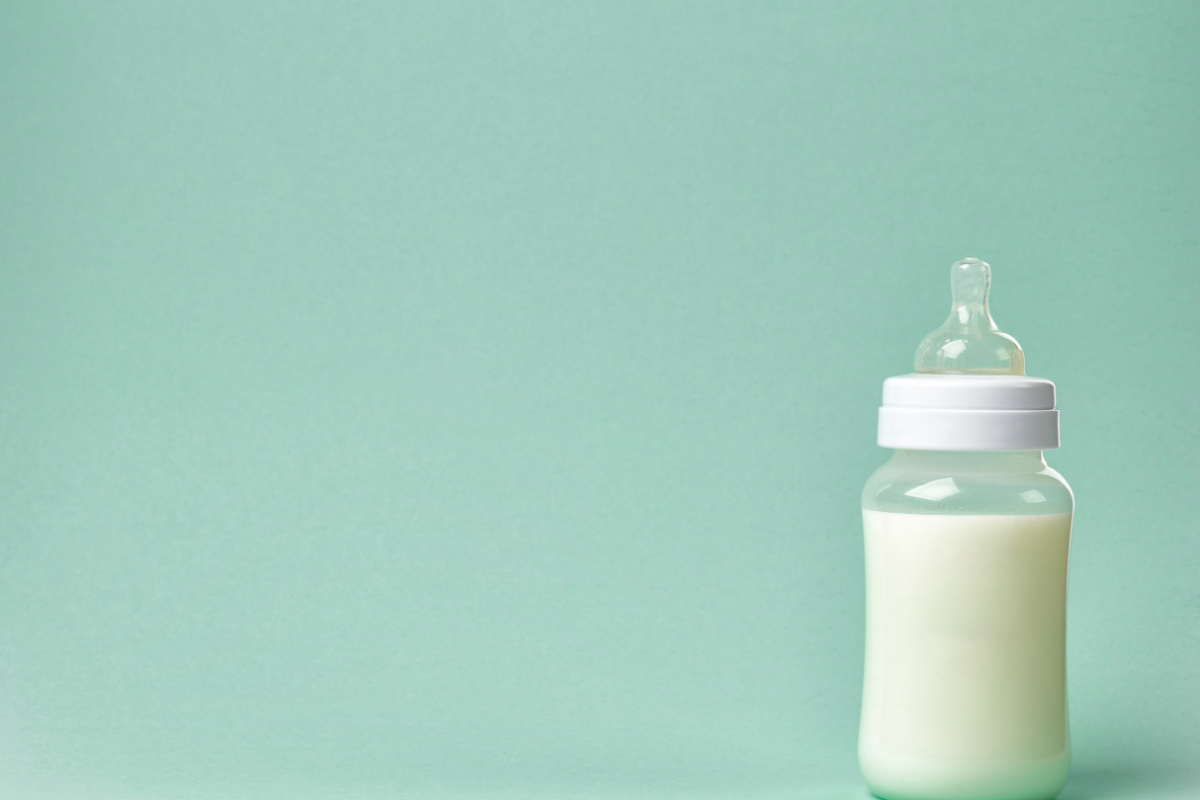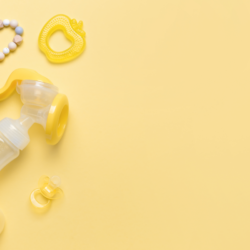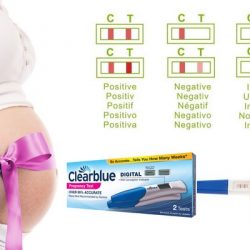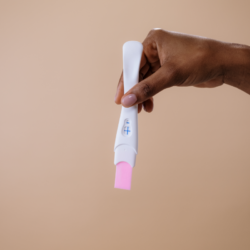When we’re getting ready to welcome baby, or if baby is already here, a thousand questions are running through our minds. Adapted nappies, food… the preparations are numerous and crucial to the baby’s healthy development. Whether it’s mixed breastfeeding, a transition to bottle-feeding or baby’s thickened meals, the choice of teat is a difficult one. Baby’s diet is vital to his health and well-being. Particular care must be taken when choosing a bottle teat. This is a crucial stage in ensuring baby’s comfort and allowing him to drink in complete safety. We’re here to help you choose the right teat for your baby.
Rubber or silicone teat?
The natural rubber teat is easily recognisable with its retro look and amber colour. They are usually prescribed for babies who have difficulty suckling. They need a softer teat to make it easier for the milk to flow through . The only drawback is its slightly peculiar smell. This may come as a surprise at first. But most of the time, babies adapt very well to it. However, rubber teats wear out more quickly than silicone teats . But the fact that they are made from natural materials means that there is less risk of allergy for baby.
Silicone teats, on the other hand, have a more modern design. More suitable for gluttonous babies because it is stiffer, it requires extra effort from baby when sucking. The flow of milk is easier to control, so you can keep up with baby’s diet. It is completely odourless and its transparent colour makes it easy to check that it is clean. It is more resistant to washing than a rubber teat.
Teat speed
The speed of the teat is an important factor when it comes to buying. It is chosen according to baby’s sucking rhythm. It may also depend on the thickness of the contents, to prevent baby tiring himself during feeding.
From 0 to 6 months, we recommend a flow rate of level 1 or 2. For those over 6 months, or more or less 18 months, the recommended flow rate is 3.
Why is the shape of the bottle teat important?
The shape of the bottle teat can have an impact on the way your baby sucks, which can affect the amount of air he swallows, as well as his digestion. The shape of the teat can also affect the way your baby uses his mouth and tongue during feeding.
The different types of bottle teat
We’re now going to look at the different types of bottle teat most commonly found on the market and the advantages and disadvantages of each type. Choosing your baby’s bottle teat is important for comfortable and healthy feeding, and by understanding the characteristics of each type, you’ll be able to choose the teat that’s best for your baby… Here are the most common types:
Round teat
The round teat is the most common form of bottle teat, often recommended for newborns and babies starting to drink from a bottle. It’s easy to use and suitable for breastfed babies who need to adapt to the shape of the bottle. However, the round teat may not be suitable for all babies, especially those with regurgitation problems, as it may cause them to suck harder. In addition, the round teat does not exactly replicate the shape of the mother’s breast, which can cause transition difficulties for some babies.
Flat-tipped teat
The flat teat is designed to mimic the shape of the breast during breastfeeding and can help babies make the transition from breast to bottle and vice versa with ease. It is often recommended for babies who find it difficult to adapt to other teat shapes. However, the flat-tipped teat may not be suitable for all babies, as it may require a stronger suction to obtain milk. In addition, it may not be suitable for older babies or those who feed more quickly, as it may not provide enough milk at a high flow rate. Finally, the flat-tipped teat may require more regular maintenance to ensure it remains clean and hygienic for your baby.
Slanted tip teat
The angled teat is designed to allow your baby to maintain a more natural position during feeding. It can help reduce colic and spit-up, as it allows the baby to drink without swallowing too much air. However, the slanted tip teat can be more difficult to use than other forms of teat, as it requires a specific position for the milk to flow properly. In addition, it may not be suitable for all babies, as it may require stronger sucking to obtain milk. Lastly, a nipple with a slanted tip may need to be cleaned more thoroughly to prevent bacteria accumulating in the corners and crevices of the nipple.
Teat with widened tip
The enlarged tip teat is designed to allow the baby to take a larger quantity of milk at a time, which can be useful for older babies or those with larger appetites. However, this type of teat may not be suitable for all babies, as it can lead to stronger and faster sucking, which can cause problems with regurgitation or colic. In addition, the widened tip teat may not provide a fast enough flow of milk for babies who are faster feeders, which can frustrate them and make them less likely to drink from the bottle. Finally, the enlarged-tip teat may require closer supervision to avoid the risk of choking, as it can allow the baby to take in a large quantity of milk at a time.
Variable-flow teat
The variable flow teat is designed to allow the parent to regulate the amount of milk the baby takes at each feed. It can be useful for babies who find it difficult to regulate their feeding, as it allows the flow rate of the teat to be controlled. However, the variable flow teat may require a little more time and effort to find the optimum flow rate for the baby, and this can be difficult for parents who are not familiar with this type of teat. In addition, the variable flow teat may not be suitable for all babies, as some babies may find it difficult to adapt to different flow rates during feeding. Finally, the variable flow teat may require more regular maintenance to ensure that it remains clean and hygienic for your baby.
Butterfly variable flow teat
Advantages:
- Allows baby to take breaks during feeding
- Can help babies who have difficulty regulating their feeding
Disadvantages:
- Can be difficult for parents to use
- May not be suitable for all babies
The butterfly-shaped variable flow teat can be useful for babies who have difficulty regulating their feeding. It allows the baby to take breaks during feeding, which can help prevent spit-up and colic. However, it can be difficult for parents to use, as the flow rate of the teat needs to be adjusted regularly. It may also not be suitable for all babies because of its specific shape.
Does the choice of teat have an impact on oral development?
The relationship between teats and tooth development
When it comes to your little one’s oral health, the choice of teat for a feeding bottle is not insignificant. Paediatricians and dentists agree that the shape and material of the teat can have a significant influence on the development of oral structures and tooth growth.
Round teats, for example, are often recommended for newborns because their shape mimics that of the nipple. However, as the child grows and teeth begin to come through, orthodontic teats take over. Their specific shape promotes a better position for the tongue and a balanced distribution of pressure on the palate, which is crucial for the correct alignment of teeth and the prevention of dental malocclusions.
However, it should be noted that prolonged and frequent use of teats, whatever their shape, can lead to problems such as deformation of the palate or the development of an open bite, where the front teeth do not meet when the jaw closes. These effects are all the more marked if the child continues to use the teat well beyond the recommended age, generally beyond the age of two or three.
Prevention advice
To minimise the risks to oral development, preventive measures can be implemented. It is advisable to limit the amount of time the dummy is used each day and not to let the child fall asleep with it, in order to reduce the constant pressure it can exert on the palate and teeth.
It is also advisable to have the child’s mouth checked regularly by a health professional to monitor the impact of the dummy on dental growth. Early observation of signs of malocclusion or deformity can enable early intervention and adjustment of the use of the dummy or even its replacement with another less intrusive device.
Finally, choosing the right teat for your child’s age and specific needs is essential. When switching to a larger or better-shaped teat, it is vital to take into account the manufacturer’s recommendations and consult a paediatrician or dentist specialising in children’s oral health.
Our selection of the best teats and feeding bottles :
MAM Tétine Silicone Vitesse 2 – Débit Moyen – Set of 2: designed for babies aged 2 months and over to ease the transition from breastfeeding to bottle-feeding . Its silky-soft surface reminds baby of the softness of mum’s breast. It reproduces the flattened shape of the nipple when baby sucks. Ultra-flexible and extra-soft, it doesn’t stick during baby’s suckling, providing a feeling of comfort and familiarity. It is compatible with all MAM brand feeding bottles.
Mam Silicone Teat Flow 0 for Newborns: a gentle start to bottle-feeding for your baby. Baby adapts easily to this small, extremely flexible teat. With a slow, constant flow, it’s ideal for newborns. This teat has an air valve to prevent it collapsing during sucking. Its flat shape is similar to that of mum’s teat. This means it fits perfectly into your baby’s little mouth. Compatible with all MAM feeding bottles, it is suitable for both breast milk and infant milk.
Mam Tétine Silicone Débit X Liquide épais Set of 2: This silicone teat is suitable from 6 months and upwards. Its soft feel and silky-soft surface are reminiscent of mum’s own skin. Slight ridges line the inside to prevent the teat from flattening out during feeding. It’s ideal for introducing baby to food diversification. This way, his first feeds will be a moment of relaxation and pleasure.
Should I choose the same brand of feeding bottle and teat?
Mam Biberon Easy Start Anti Colique débit 1 Rose 160 ml lot de 2: From birth to 6 months, its flattened shape is as soft and supple as mummy’s breast. This bottle guarantees baby a relaxing feed that combines comfort and design. With its pretty nature-inspired motifs, it catches baby’s eye. It’s also very practical thanks to its leak-proof cap. Its wide neck makes it easy to fill, and the unscrewable base makes it easy to clean. This feeding bottle is also fitted with graduations for measuring the amount of milk. Its patented anti-colic valve system reduces air intake while respecting baby’s feeding rhythm. Your little one will be delighted.
Mam Biberon de Transition Vert 220 ml: From 4 months, this bottle combines functionality and design. With its non-leak, ultra-flexible spout with flow rate 3 (fast). This makes it easy to switch from bottle to cup or breast to cup. And with handles for baby to hold on to, your little one will be able to drink like a grown-up!







